Canasta
Canasta is a card game of the Rummy family which originated in Uruguay probably about 1947.
Canasta is a card game of the Rummy family which is believed to have been invented in the old Jockey Club of Montevideo, Uruguay, in 1947. By 1948 it was exceedingly popular in the fashionable clubs of Argentina and from there it spread to the rest of South America. In 1949 it was introduced into the USA where it quickly became the most popular card game before being knocked off the top place by contract bridge. The word “Canasta” is Spanish, meaning “basket”.
Canasta is best played by four players forming two partnerships using two identical decks each of 52 cards plus two jokers (which are wild cards, hence sometimes carrying the legend ‘wild’ rather than ‘joker’ in Canasta decks), totalling 108 cards. It is for this reason that manufacturers commenced adding two jokers to packs of playing cards, rather than just one, in around 1950. Unusually, only two suits are recognised in Canasta - red and black, and different denominations of cards score differently. This has led to the production of custom Canasta cards, without suit signs, and ordinary decks with scores printed on the cards. Custom dual decks of cards, not dissimilar to those produced for bridge, but with the same back-design and colour have also been marketed by among others the US Playing Card Company, Waddington’s, De La Rue and Piatnik.
A number of patent applications relating to Canasta began to appear after 1949. These include table covers for Canasta games (1949), simplified card decks for Canasta (1953) and shuffling devices (1953).
Many images are clickable 
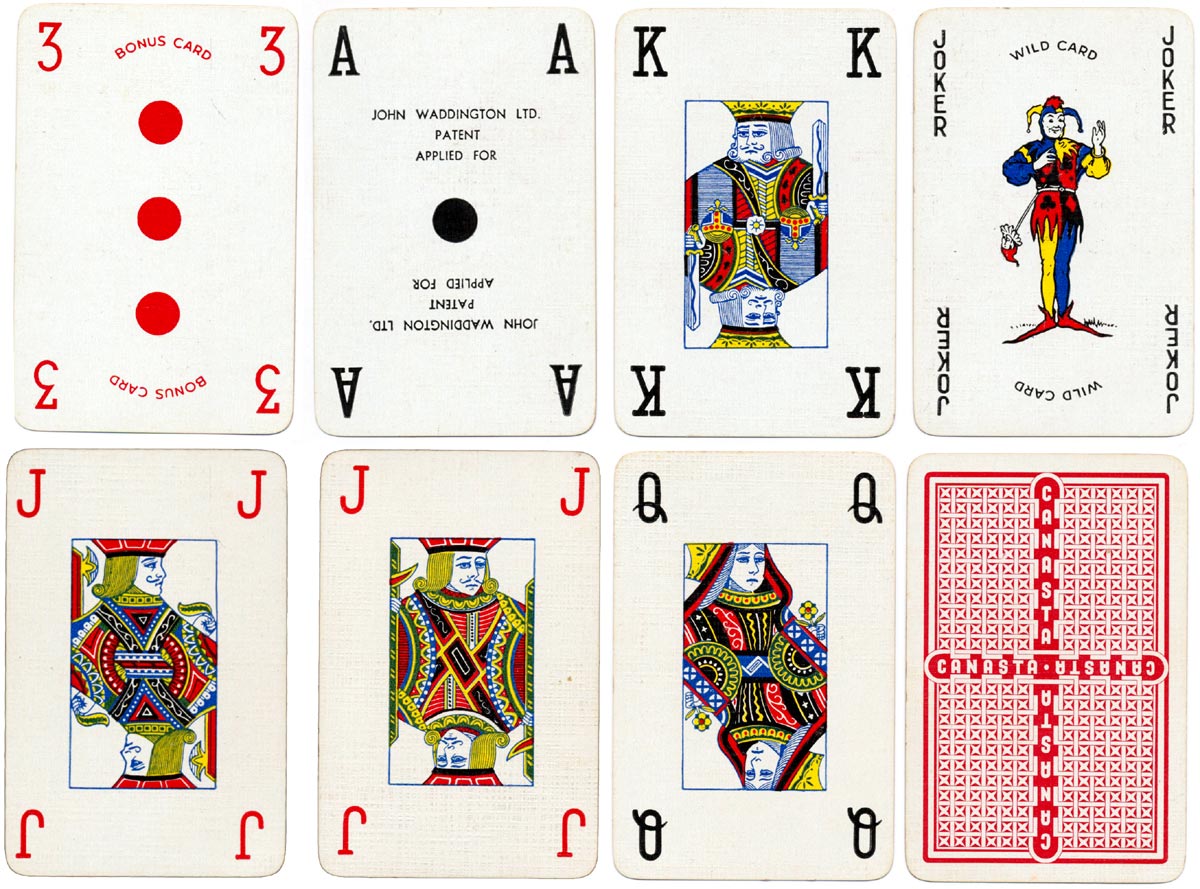
Above: Waddington’s “Real Canasta” custom playing cards without suit signs but no point values printed on the cards, 1952.
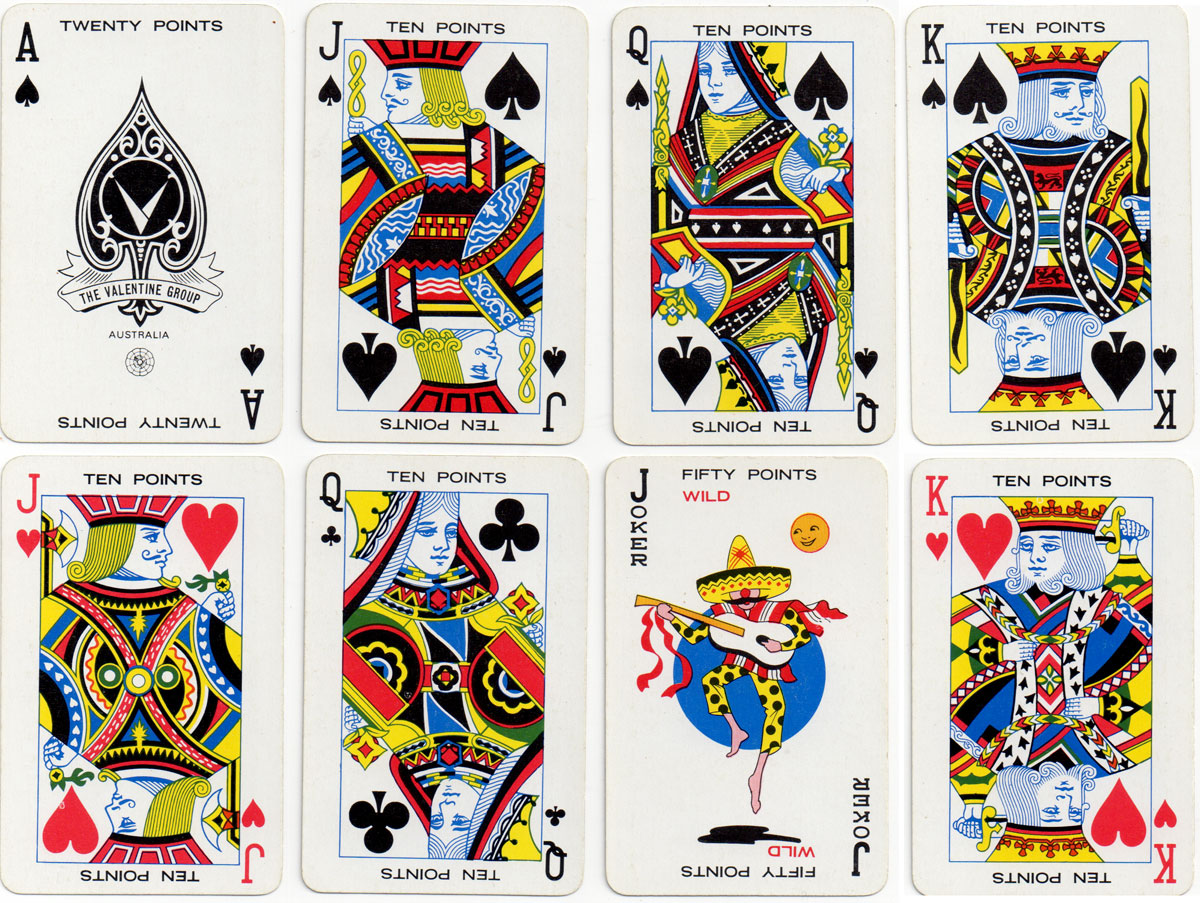
Above: Canasta cards manufactured in Australia by the Valentine Group with a Mexican style Joker and value points marked on the cards. Image courtesy Ken Lodge.
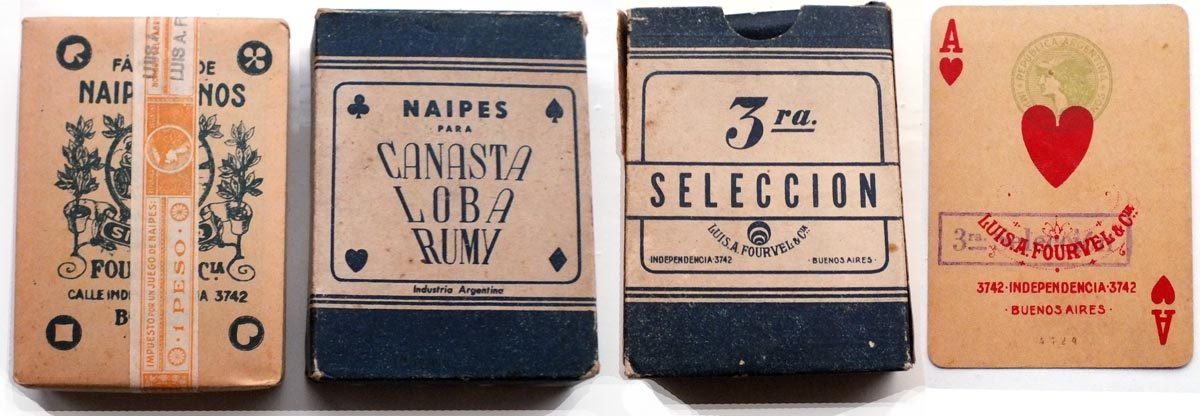
Above 3rd grade quality Naipes Side Car manufactured by Luis A. Fourvel y Cía, Buenos Aires, c.1948, with a reference to ‘Canasta’ on the box.
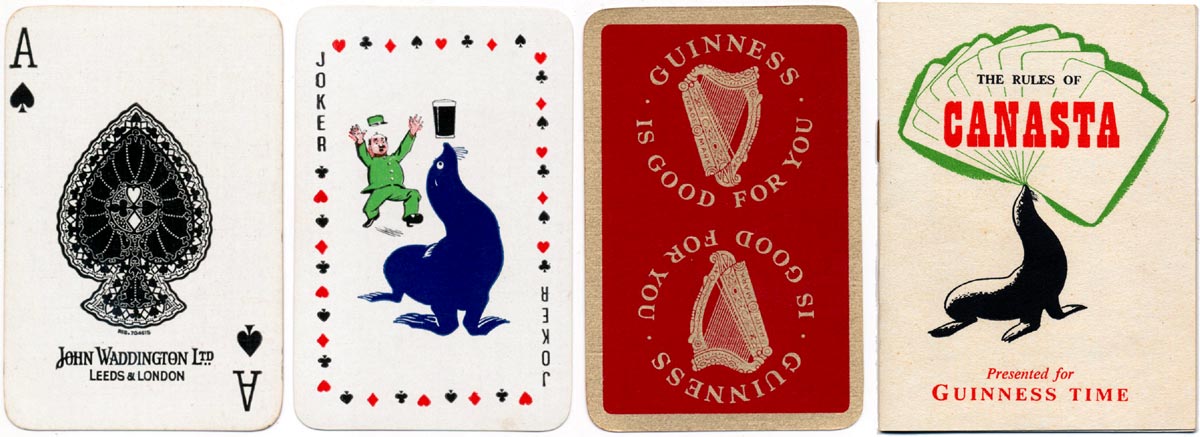
Above Guinness promotion Canasta set by Waddingtons, c.1951. The standard Canasta set has been rebadged for Guinness - the rules booklet has a different cover but is the same inside (click image to zoom).
Variations of Canasta include three-deck Canasta, using three identical decks of 52 cards plus six jokers and Samba which also uses three decks and six jokers.
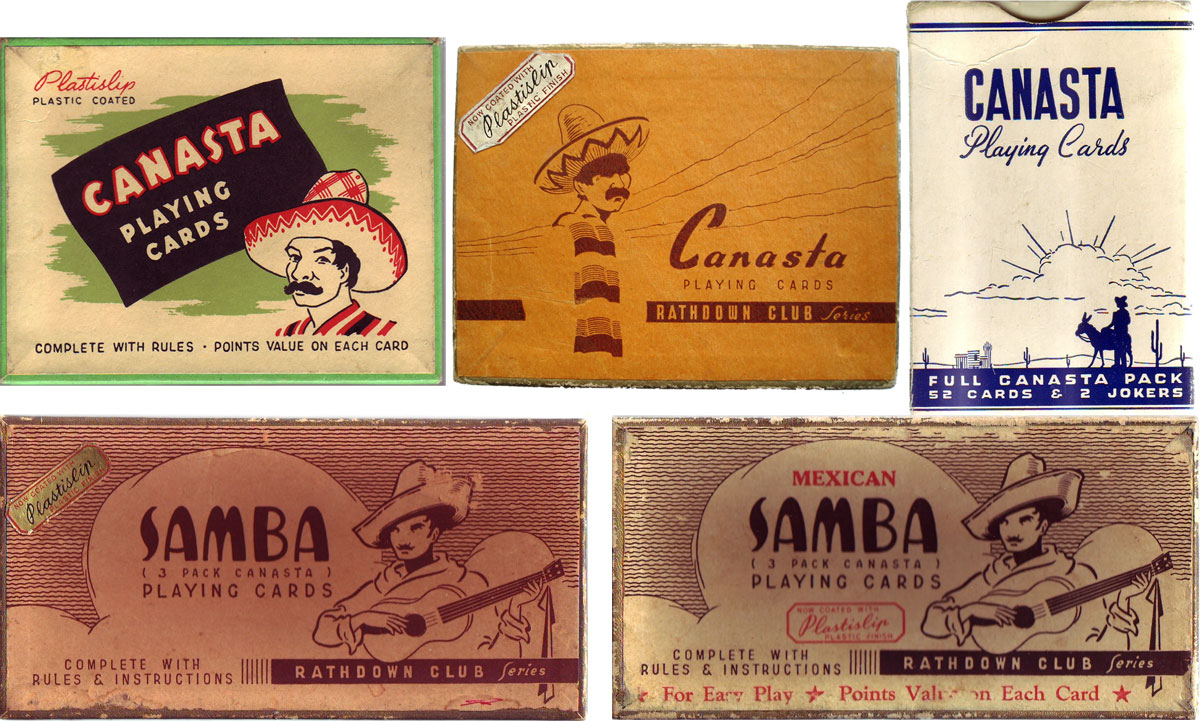
Above: assorted boxes for ‘Canasta’ and ‘Samba’, another variation on the Canasta theme, with romantic touristic Mexican imagery, produced in Australia by Hudson Industries Pty Ltd.
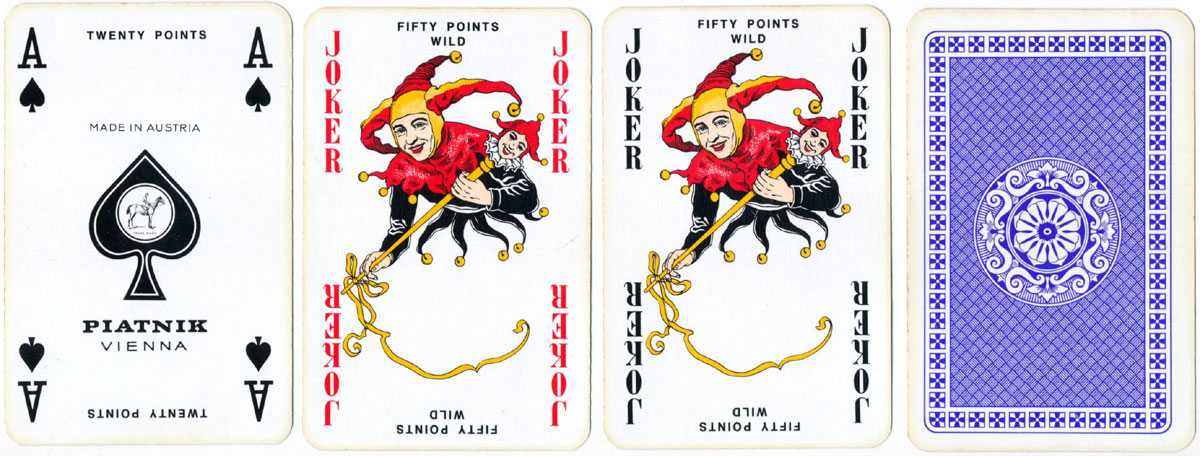
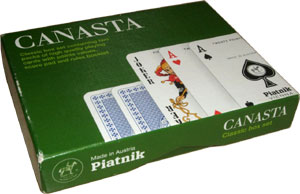
Above: box from Piatnik “Canasta” set, 1990s or later.
Above: Canasta No.2302 set manufactured in Austria by Piatnik with value points marked on the cards, c.1990.
The German company Bielefelder Spielkarten GmbH issued a booklet of rules in English but illustrated with North German (Berliner) pattern cards. Undated but probably from about 1960.
Acknowledgements: thanks to Matt Probert and Roddy Somerville for research and images (unless noted otherwise) and to Cristina Lia Broquen for notes about the Uruguayan origin of the game Canasta.
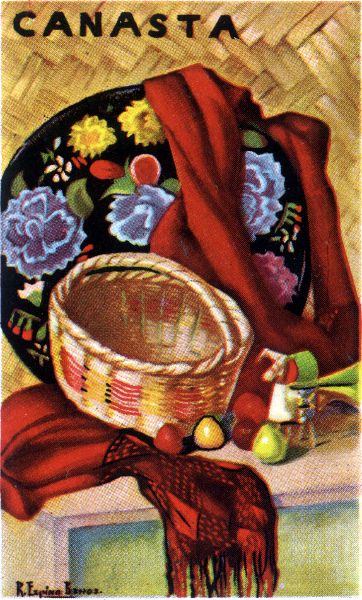
Above: painting by Ramón Espino Barros (1918-2000) on the reverse of a double Canasta set printed by Clemente Jacques y Cia., S.A., Mexico, c.1950
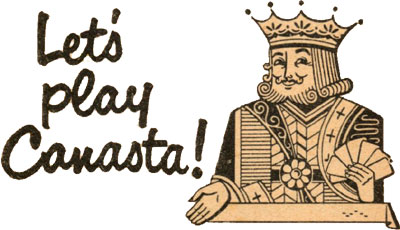
Above: USPCC Congress “Canasta” leaflet, c.1950.
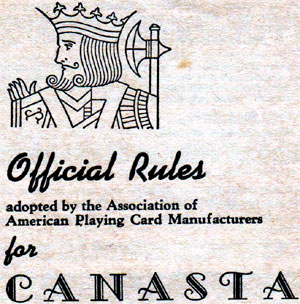
Above: “Canasta” leaflet, c.1951.
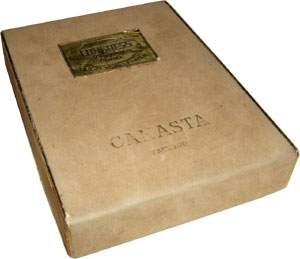
Above: USPCC Congress “Canasta” set, 1950. The set comprises two identical decks, both with two jokers, plus a rules leaflet. The cards are gilt edged and of super smooth feel and quality.
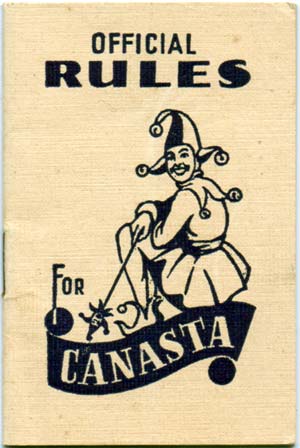
Above: Official Rules booklet for “Canasta” arranged by Albert H. Morehead, printed by Alf Cooke Ltd, Leeds & London [no date].
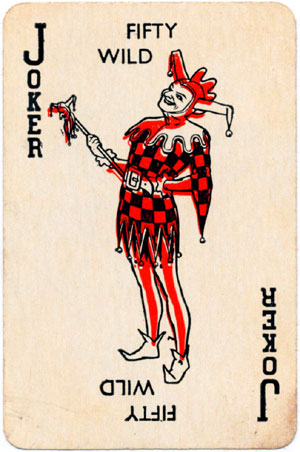
Above: Canasta Joker by Strong & Ready Ltd, Auckland, New Zealand.

Above: Waddington’s “Canasta” set containing the official rules booklet and a Canasta Tray, c.1950.
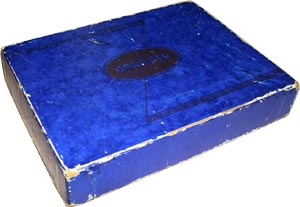
Above: Waddington's “Canasta” set with a rules booklet (a code on the rear page suggests 1950, others dated 1951) and a slip offering a help service by the Canasta Rules Committee.
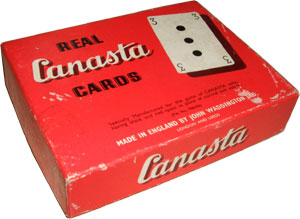
Above: Waddington’s “Real Canasta” set, patented by Cobianchi in February 1951, the patent being granted in January 1952, also includes an official rules booklet and score sheet, 1952.
See a much later Waddingtons set dated 1984►
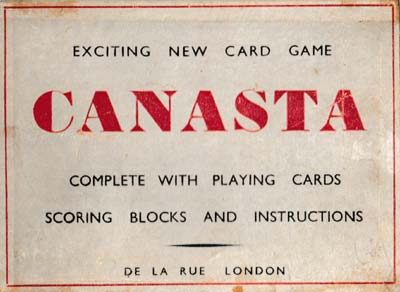
Above: early De La Rue set, marked “Sixth Edition”.
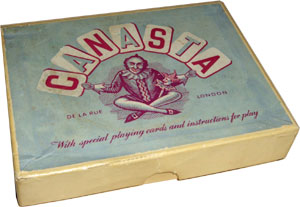
Above: De la Rue boxed “Canasta” set, c.1950.
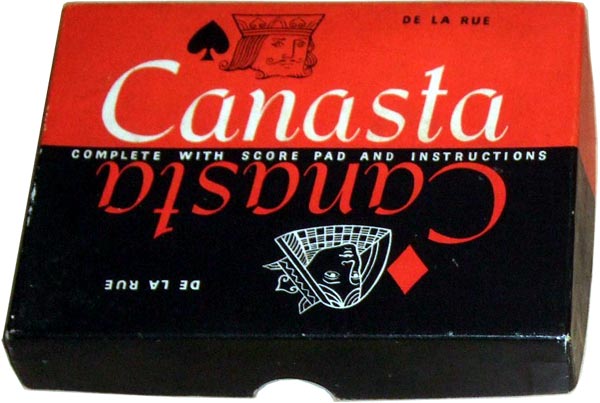
Above: De la Rue boxed “Canasta” set, c.1962.
By Simon Wintle
Spain • Member since February 01, 1996 • Contact
I am the founder of The World of Playing Cards (est. 1996), a website dedicated to the history, artistry and cultural significance of playing cards and tarot. Over the years I have researched various areas of the subject, acquired and traded collections and contributed as a committee member of the IPCS and graphics editor of The Playing-Card journal. Having lived in Chile, England, Wales, and now Spain, these experiences have shaped my work and passion for playing cards. Amongst my achievements is producing a limited-edition replica of a 17th-century English pack using woodblocks and stencils—a labour of love. Today, the World of Playing Cards is a global collaborative project, with my son Adam serving as the technical driving force behind its development. His innovative efforts have helped shape the site into the thriving hub it is today. You are warmly invited to become a contributor and share your enthusiasm.

Related Articles
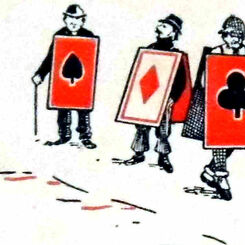
Progressive Whist Cards
There are references to “progressive whist” or “whist drives” during the 19th and early years of the...
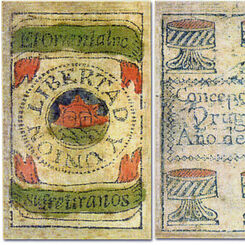
Naipes Artiguistas, 1816
Naipes Artiguistas published in Concepción del Uruguay, Entre Rios province (Argentina) in 1816, by ...
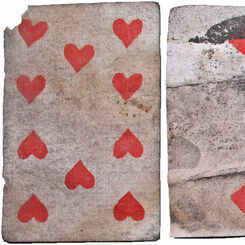
Archaeological find: old playing cards under the floorboards
The municipal archaeological service in Dordrecht (Netherlands) recently found some antique playing ...
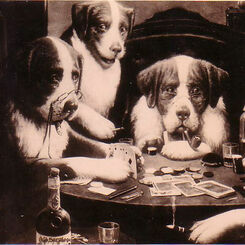
The Invention of Bridge
“The Invention of Bridge” - a humorous story by Larry Lefkowitz.
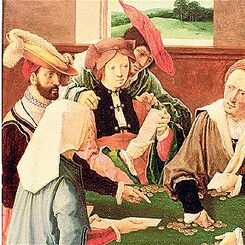
Netherlands
Playing cards have been known in the Low Countries since the 14th century
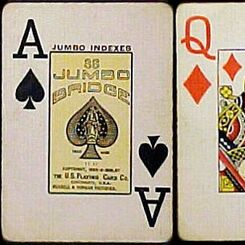
Jumbo Bridge 88
Cards with jumbo indices were introduced in 1895, and were given the subtitle '88'.
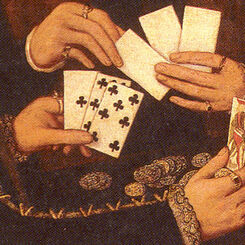
History of Blackjack
Over the years the origin of Blackjack, like many other games, has eluded researchers for a long tim...

History of Online Casinos
Online casinos appeared shortly after the internet became a more mainstream tool for the public to u...
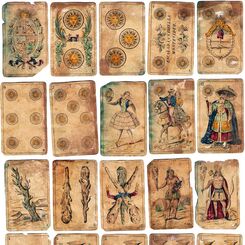
Uruguayan Playing Cards
Until the 19th century playing cards were imported into Uruguay from Spain.
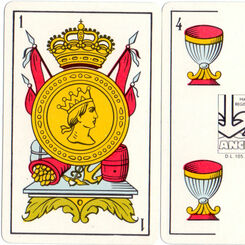
Naipes ‘Ancla’
Naipes opacos ‘Ancla’ manufactured by Cía General de Fósforos Montevideana S.A. c.1980.
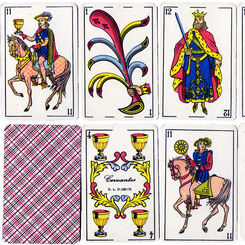
Naipes ‘El Gaucho’ by Cervantes S.A., Montevideo, c.1970s
Naipes ‘El Gaucho’ manufactured and distributed by Cervantes S.A., Montevideo, c.1970s.
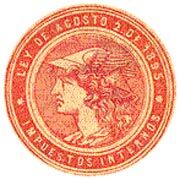
Argentina Tax Stamps on playing cards 1895-1968
Argentina Tax Stamps on playing cards 1895-1968
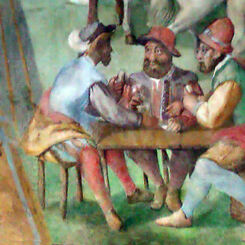
Italian Playing Cards
The first reliable evidence that playing cards were being used in Italy is from 1376, when a game ca...
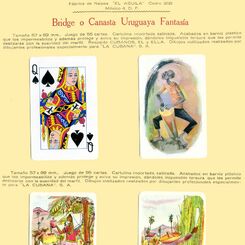
Naipes Bridge o Canasta Uruguaya,
Naipes Bridge o Canasta Uruguaya, La Cubana, S.A. (Fabrica de Naipes El Aguila), Mexico, c.1960.
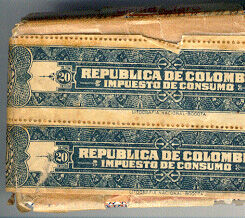
Impuesto de Timbre para Naipes
EL CONGRESO DE COLOMBIA. LEY 69 DE 1946, por la cual se elevan las tarifas de algunos impuestos indi...

History of English Playing Cards & Games
The History of English Playing Cards dates probably from the mid 15th century
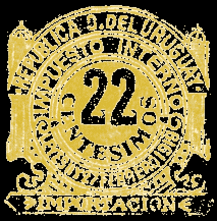
Uruguay playing card tax
In 1806 the Council of Concepción del Uruguay imposed an 8 Peso tax on card and billiard tables on a...
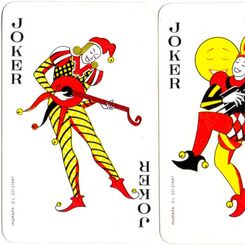
Naipes 210 made by Industria Gráfica Papelera S.A.
Naipes '210' playing cards made in Uruguay by Industria Gráfica Papelera S.A. (Ingrapa), c.1990.

Cía General de Fósforos Montevideana
The design of these Spanish-suited cards is the same Spanish Catalan style as used by their sister c...
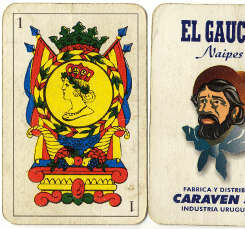
Naipes ‘El Gaucho’
Naipes ‘El Gaucho’ manufactured and distributed by Caraven S.A., Montevideo, Uruguay, c.1990s.
Most Popular
Our top articles from the past 60 days






















